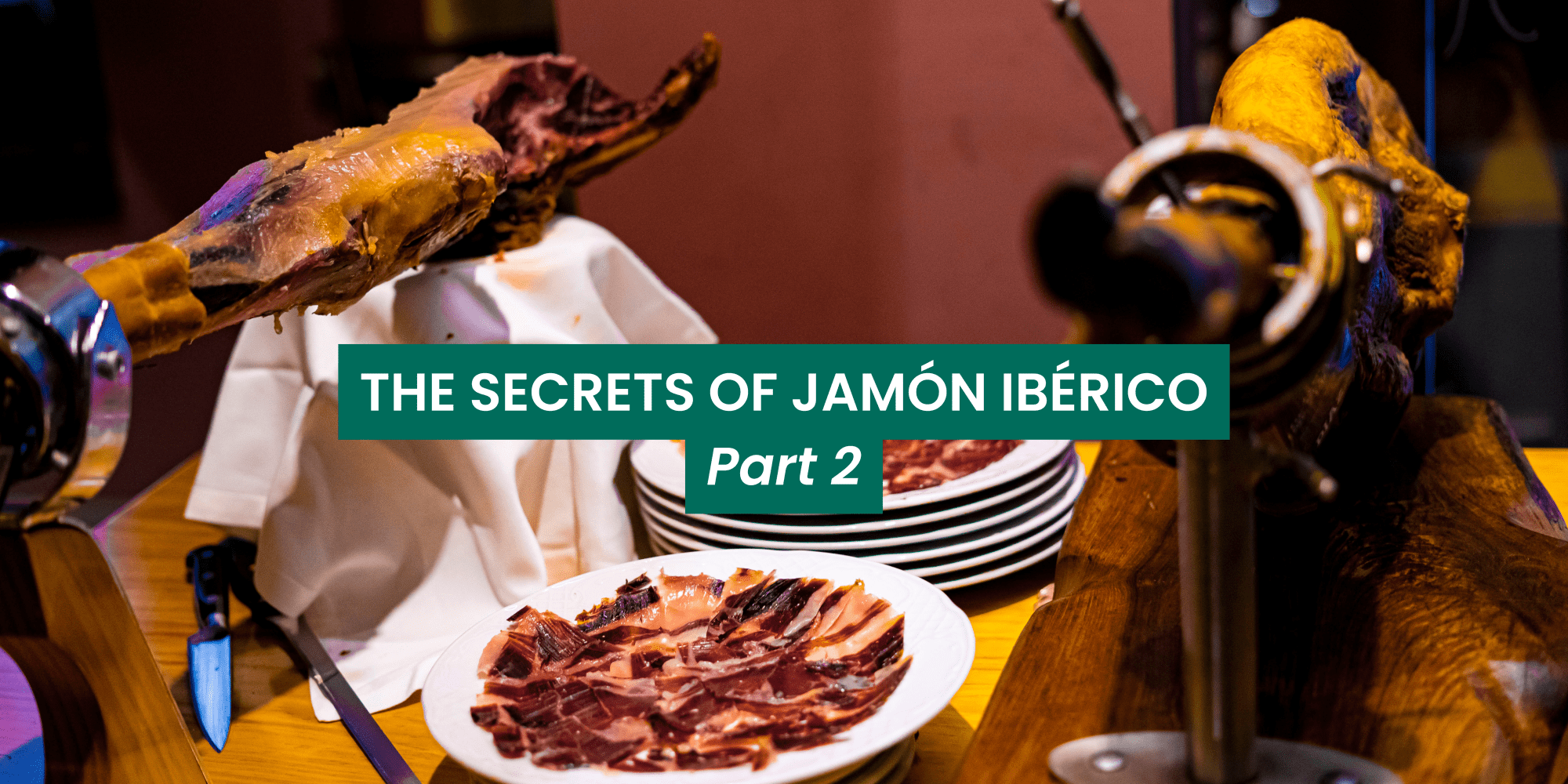THE SECRETS OF JAMÓN IBÉRICO: PART 2

Following up on our first post about the secrets and history behind jamón ibérico, we are sharing more facts about this Spanish delicacy! Spanish ham dates back centuries, so there’s a lot to say about this cured and salty treat. While you can find jamón ibérico in many stores and shops, not all ham is created equal. With a little bit of information, you can spot and choose the best Spanish ham that suits your tastes!
Breeds of pigs
One of the biggest factors that determines the taste and quality is the breed of pig that the ham comes from. There are four breeds of pigs in Spain that produce Spanish ham, and the quality of the ham varies between breeds.
Ibérico: This breed is native to Spain and the one most used in ham production. However, less than 5% of these pigs are 100% pure-bred Ibéricos. This is because the pure-bred pig takes longer to grow and fatten up when compared to other breeds or mixed breeds. This pig is black, red, or spotted in color and feeds on acorns, or bellotas. These pigs are always free-range. The purer the pig, the higher quality the ham is.
Duroc: These pigs have a reddish color and are indigenous to the USA. Durocs are often bred with Ibéricos to create jamón ibérico. The meat they produce is of high-quality, and is also used to make sausages and pork products. When they are not mixed with Ibéricos they produce jamón serrano.
Landrace: Like Durocs, Landrace pigs are bred on farms and are not free-range. They are originally from Denmark and have a lower fat content than other pigs. Because of their low fat content, they are most commonly used to produce jamón serrano. However, they can also be bred with Ibéricos to create delicious jamón ibérico.
Large White: These pigs are from England and are known for their good growth rate, as well as good meat. While the meat makes for good sausage and pork products, it has the lowest fat content, therefore lowest quality ham.
See more: Secrets and History Behind Traditional Jamón Ibérico
Grades of jamón ibérico
Knowing a little bit about the pigs that produce Spanish ham helps to understand its characteristics. There are three grades of jamón ibérico, mainly distinguished by what the pigs eat. Like most things, the longer the ham ages, the better the taste and quality. Top-of-the-line ham can age for as long as four years, with the lower grades between one and four years. Let’s take a look at the different varieties of this mouth-watering Spanish delicacy!
Jamón ibérico de bellota: This ham is the king of all Spanish hams! It’s produced from Ibérico pigs and aged for at least three years. It can come from 100% pure Ibéricos, or a mix. Jamón ibérico de bellota is dark red in color and has white fat marbled throughout. It has sweet, nutty notes as the pigs feed on acorns throughout their lives. This is the best jamón ibérico there is, so you can expect it to be quite pricey, but it’s well worth it! 100% jamón ibérico has a black label, and for Ibéricos of mixed breed, a red label.
Jamón ibérico de cebo de campo: This ham comes from pigs that have been fed a diet a mix of acorns and feed, but are still left to graze free-range. Because of this, the ham is still of quite good quality. This ham, like the highest grades, is aged for at least three years. It comes with a green label to denote its quality.
Jamón ibérico de cebo: Last but not least, this ham comes from pigs that are not free-range, but instead are fed a diet of feed and are raised on traditional farms. These are still Ibérico pigs, so the ham is quite delicious, but just not as high-quality as the other types of jamón ibérico. It has a white label to denote its grade.
If you love jamón ibérico and want to try some of the best, join Food Lover Tour on a food tour! We will take you to some of our favorite bars where you will try savory, delicious Spanish ham!
